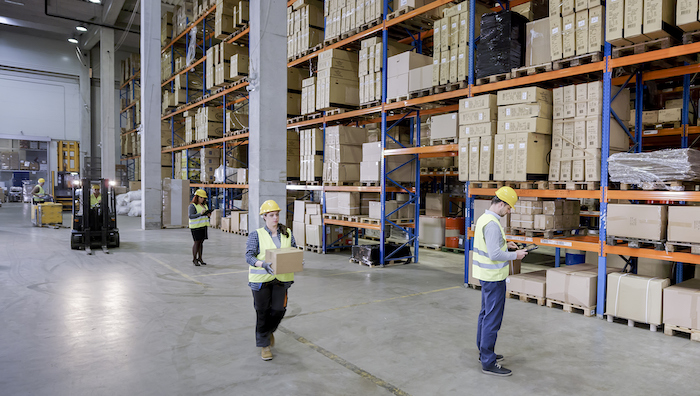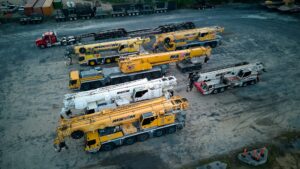
As environmental concerns continue to grow, the manufacturing sector is under increasing pressure to adopt sustainable practices. Enterprise resource planning (erp) systems play a crucial role in driving sustainability by optimizing resource use and reducing waste. This blog post explores how erp systems can help manufacturers implement eco-friendly practices, highlighting benefits and lesser-known features that contribute to sustainability.
The need for sustainable manufacturing
Sustainable manufacturing focuses on producing goods in a way that minimizes environmental impact, conserves resources, and reduces waste. The benefits include:
Reduced environmental footprint: lower emissions, less waste, and reduced resource consumption.
Cost savings: efficient resource use leads to cost reductions.
Improved brand image: consumers and stakeholders increasingly favor businesses that prioritize sustainability.
According to the world economic forum, sustainable manufacturing practices can increase profitability by up to 60% while reducing environmental impact.
How erp systems drive sustainable manufacturing
1. Resource optimization:
Erp systems provide real-time data on resource consumption, helping manufacturers optimize the use of raw materials, energy, and water. This optimization reduces waste and lowers costs.
Implementation tip:
Use erp analytics to track resource usage across production processes. Identify areas where resources are overused and implement measures to improve efficiency.
Stat insight:
A study by mckinsey found that companies using erp systems to optimize resources can reduce material costs by up to 15%.
2. Waste reduction:
Erp systems enable manufacturers to monitor and manage waste more effectively. By tracking production processes and identifying inefficiencies, businesses can reduce scrap, rework, and disposal costs.
Implementation tip:
Implement waste tracking features in your erp system to monitor the amount and types of waste generated. Use this data to develop waste reduction strategies and set targets for improvement.
3. Energy management:
Erp systems can integrate with energy management tools to monitor and control energy consumption. This integration helps manufacturers identify energy-saving opportunities and reduce their carbon footprint.
Implementation tip:
Integrate your erp system with energy monitoring solutions to track energy usage in real-time. Use this data to implement energy-saving measures, such as optimizing equipment usage and improving insulation.
Stat insight:
The u.S. Department of energy reports that manufacturers can reduce energy consumption by 20-30% through effective energy management practices.
4. Sustainable supply chain management:
Erp systems facilitate better collaboration and communication with suppliers, ensuring that sustainable practices are maintained throughout the supply chain. This includes tracking the sourcing of raw materials and monitoring supplier compliance with environmental standards.
Implementation tip:
Use erp tools to assess and monitor supplier sustainability performance. Establish criteria for sustainable sourcing and work with suppliers to meet these standards.
5. Product lifecycle management (plm):
Erp systems support plm by providing insights into the environmental impact of products throughout their lifecycle. This includes design, production, distribution, use, and disposal. By understanding the full lifecycle impact, manufacturers can make more sustainable decisions.
Implementation tip:
Leverage plm features in your erp system to analyze the environmental impact of your products. Use this information to design more sustainable products and reduce the environmental impact at each stage of the lifecycle.
Stat insight:
According to a report by accenture, companies using plm to drive sustainability can reduce product lifecycle costs by up to 20%.
6. Compliance and reporting:
Erp systems help manufacturers comply with environmental regulations by automating compliance reporting and tracking. This ensures that businesses meet legal requirements and avoid penalties.
Implementation tip:
Set up automated compliance reporting in your erp system to track environmental metrics and generate reports. Ensure that your system is updated with the latest regulatory requirements.
Lesser-known features of erp systems for sustainable manufacturing
1. Circular economy support:
Erp systems can facilitate circular economy practices, such as recycling, remanufacturing, and refurbishing. By tracking materials and products throughout their lifecycle, businesses can recover valuable resources and reduce waste.
Implementation tip:
Use erp features to manage the return, refurbishing, and recycling of products. Track the flow of materials to ensure that they are reused or recycled efficiently.
2. Sustainable packaging management:
Erp systems can help manufacturers optimize packaging materials and design to reduce environmental impact. This includes minimizing packaging waste and using eco-friendly materials.
Implementation tip:
Implement packaging management features in your erp system to analyze the environmental impact of your packaging. Use this data to design more sustainable packaging solutions.
3. Real-time environmental monitoring:
Some erp systems offer real-time environmental monitoring capabilities, allowing manufacturers to track emissions, water usage, and other environmental metrics in real-time.
Implementation tip:
Integrate real-time environmental monitoring tools with your erp system to track key environmental metrics. Use this data to identify areas for improvement and implement corrective actions promptly.
Conclusion
Erp systems play a vital role in driving sustainable manufacturing practices by optimizing resource use, reducing waste, and improving overall efficiency. By leveraging the capabilities of erp systems, manufacturers can achieve significant environmental and economic benefits.
Beyond the commonly discussed advantages, erp systems offer lesser-known features such as circular economy support, sustainable packaging management, and real-time environmental monitoring that further enhance sustainability efforts. Implementing these features can help businesses build a more sustainable future while maintaining competitiveness and profitability.
Investing in an erp system for sustainable manufacturing not only benefits the environment but also drives long-term business success. Embrace these tools and strategies to transform your manufacturing processes and achieve your sustainability goals.



